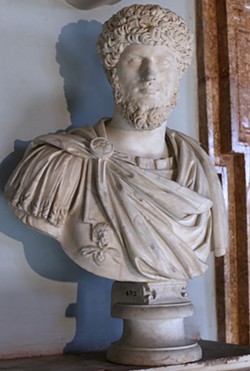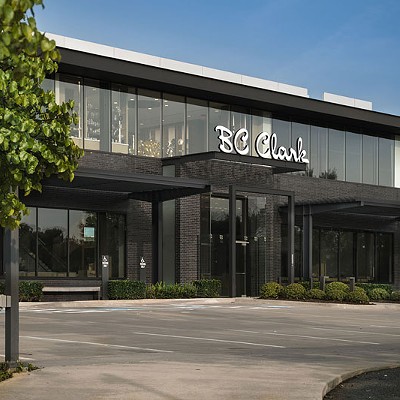Fred Jones Jr. Museum of Art is now a temporary home for 20 ancient busts from the Capitoline Museums in Rome.
The exhibit, Immortales: The Hall of Emperors of the Capitoline Museums, Rome, features sculptures of Roman emperors from the time of Augustus during the first century B.C. to the end of the Roman Empire in the fifth century A.D.
Samuel Huskey, associate professor and Department of Classics and Letters chairman at the University of Oklahoma (OU), said the school received the exhibit because Capitoline is undergoing renovation.
“The museum needed a temporary home for the pieces while they carried out renovations,” he said. “Enel Green Power, an Italian energy company with business in Oklahoma, helped make this happen both to help establish business in the U.S. and to spread Italian culture.”
Jason Houston, an associate professor of Italian at OU, said the artists are unknown but the figures were commissioned by Roman emperors.
Immortales features three themes: the propagandistic aspects of the art, fashion and ideology.
Built between the 13th and 15th centuries, Capitoline Museums take their name from their location on Capitoline Hill, one of the Seven Hills of Rome. The facility attempted to add an annex early in the 1930s when a portion of a building collapsed, Houston said.
“World War II started shortly after, so pieces from different collections were stored in a subway tube throughout the war,” he said. “When they finally got back to the project, Enel Green stepped in to help, and that is how we ended up with the pieces.”
In addition to the statues, Enel Green and Capitoline Museums also arranged for OU to receive four crates of inscriptions, primarily epitaphs and funerary etchings from the Roman Empire, all of which are unpublished. Students at OU are working with Houston to clean up and translate the engravings.
“It’s a great opportunity for our undergraduate students to work in a hands-on way with 2,000-year-old texts,” Houston said. “There are no immediate plans to put the inscriptions on display, but their presence here means nine students get to spend an hour-and-a-half every week working on an important project that will eventually see international publication.”
The 20 pieces on display in the Lissa and Cy Wagner Gallery are nearly one third of 67 carvings that are part of the permanent collection in Rome.
Francesca Giani, a graduate student in art at OU, curates the exhibition locally. The display runs through Dec. 6.
An Oct. 22 symposium and gallery discussion is open to the public. For the talk, Giani will lead a walking tour through the exhibition. The symposium features guest speakers from Yale and Johns Hopkins universities.
Print Headline: Early artifacts, Sculptures from ancient Rome are now on display in Norman.













